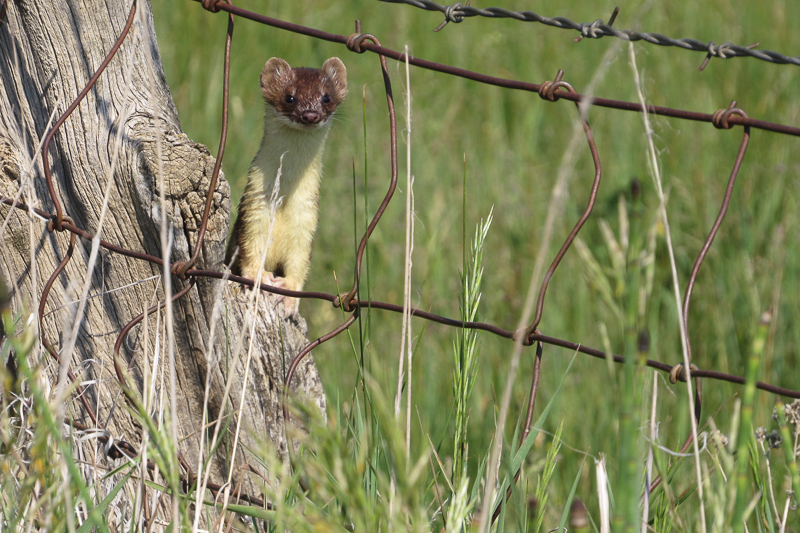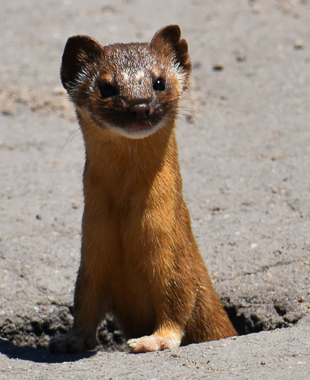Museum researcher contributes to study tracking weasel declines in US, Canada
For immediate release ‐ July 28, 2021
Contact: Jon Pishney, 919.707.8083. Images available upon request
 Stoat (Mustela erminea) by Brian Long.
Stoat (Mustela erminea) by Brian Long.
Three weasel species once common across much of the United States and Canada are now in decline according to a new study co-authored by researchers from the North Carolina Museum of Natural Sciences, Clemson University and New Mexico State University.
The study centered on the status of three weasel species in North America: least weasels, long-tailed weasels and ermine. “These three species of weasels are our smallest and most elusive carnivores,” says Roland Kays, Head of the NC Museum of Natural Sciences’ Biodiversity Lab, Research Professor at North Carolina State University and a co-author of the study. “There has been some concern that their populations are declining, but there has been no formal assessment until now.”
The research team analyzed a century of historical and recent datasets dating to 1919 to track weasel population trends in the U.S. and Canada. The datasets included historical harvests for pelts, data from museum collections, citizen scientist observations reported on the widely used iNaturalist crowdsourcing platform, and results of a recent U.S.-wide trail camera survey conducted by more than 700 researchers in 2019.
The findings, published July 21 in the scientific journal PLOS ONE, appear to show the three species are becoming rare in once-populated habitats across North American.
“The decline is striking in some regions. There are areas where weasels were once common but seem to have become rare or even absent,” said co-author Matthew Gompper, Professor and Head of the Department of Fish, Wildlife and Conservation Ecology at NMSU.

Long-tailed Weasel (Neogale frenata) by mbabbe
Among their key findings, the researchers found that fur trapper harvest of weasels declined in 15 out of the 22 states or provinces analyzed for the study, with the extent of these declines approaching 75 percent to 95 percent in many parts of their ranges. Their data also showed a particularly dramatic drop in records of long-tailed weasels since 2000 in some parts of its range, including the Southern, Central and Great Lakes regions of the U.S.
“While such decreased harvests could be a result of a decline in markets for pelts and changes in the trapping industry, the trends are also supported in other datasets,” Gompper said. “For instance, the 2019 camera-trap survey across all 50 states in the U.S. detected weasels at 14 sites, but only above 40 degrees latitude.”
Gompper said other possible causes include changes in habitat suitability; changes in the broader bird and mammal predator community that may have led to increased predation on weasels; impacts of pathogens; and climate change, which may influence both habitat quality and the availability of prey.
“It is also possible that overharvest contributed to the declines,” he added. “At this point, however, evidence for any single explanation is conjectural.”
Gompper said small carnivorous mammals like weasels could have disproportionately large ecological effects because of their abundance and their impacts on prey species, which influence plant communities.
“The reported declines in weasels, which some researchers refer to as ‘hypercarnivorous’ when it comes to feeding on prey such as rodents, add to recent concerns about the apparent loss of such small predators from regions where they were once abundant,” he said.
To read the entire study, visit https://journals.plos.org/plosone/article?id=10.1371/journal.pone.0254387.
For more information about our upcoming activities, conservation news and ground-breaking research, follow @NaturalSciences on Instagram, Twitter and Facebook. Join the conversation with #visitNCMNS.

